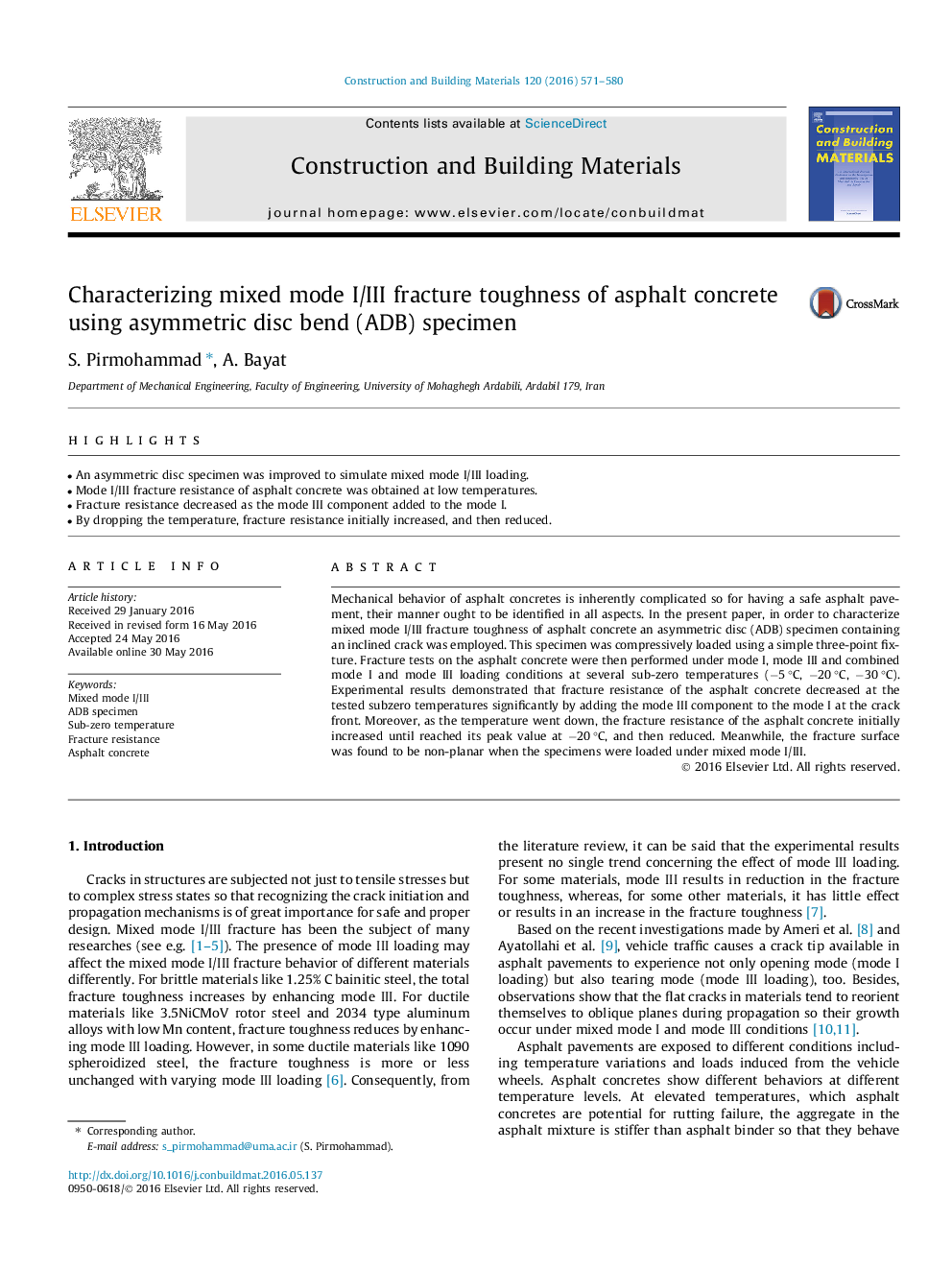| Article ID | Journal | Published Year | Pages | File Type |
|---|---|---|---|---|
| 255864 | Construction and Building Materials | 2016 | 10 Pages |
•An asymmetric disc specimen was improved to simulate mixed mode I/III loading.•Mode I/III fracture resistance of asphalt concrete was obtained at low temperatures.•Fracture resistance decreased as the mode III component added to the mode I.•By dropping the temperature, fracture resistance initially increased, and then reduced.
Mechanical behavior of asphalt concretes is inherently complicated so for having a safe asphalt pavement, their manner ought to be identified in all aspects. In the present paper, in order to characterize mixed mode I/III fracture toughness of asphalt concrete an asymmetric disc (ADB) specimen containing an inclined crack was employed. This specimen was compressively loaded using a simple three-point fixture. Fracture tests on the asphalt concrete were then performed under mode I, mode III and combined mode I and mode III loading conditions at several sub-zero temperatures (−5 °C, −20 °C, −30 °C). Experimental results demonstrated that fracture resistance of the asphalt concrete decreased at the tested subzero temperatures significantly by adding the mode III component to the mode I at the crack front. Moreover, as the temperature went down, the fracture resistance of the asphalt concrete initially increased until reached its peak value at −20 °C, and then reduced. Meanwhile, the fracture surface was found to be non-planar when the specimens were loaded under mixed mode I/III.
